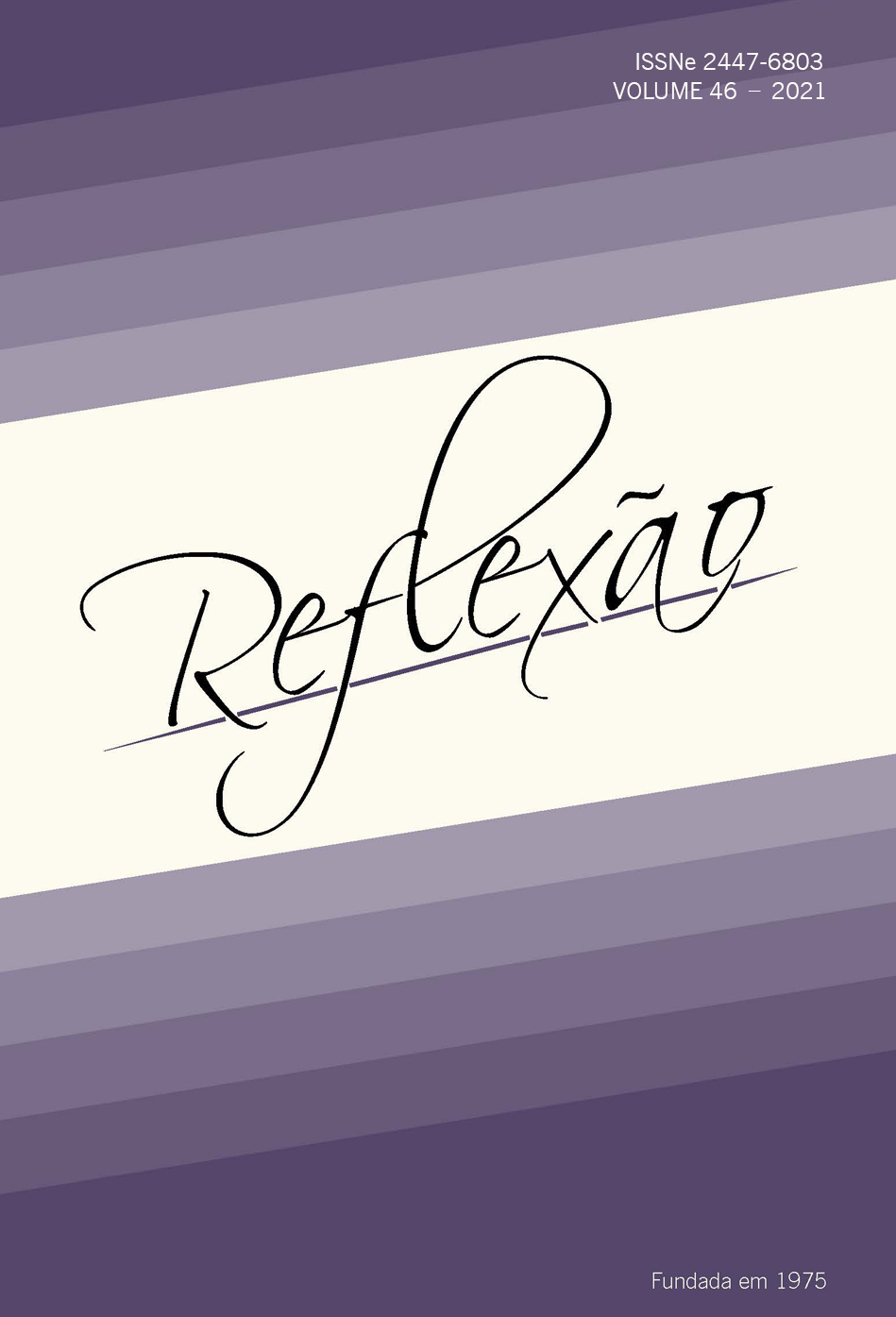Monstros nas fronteiras da cultura: das alteridades impensáveis
DOI:
https://doi.org/10.24220/2447-6803v46e2021a5533Resumen
Este artigo discute aspectos da concepção sobre “raças monstruosas” que, no imaginário antigo e medieval, habitavam as bordas do mundo conhecido. Com isso, espera-se explicitar um tipo de construção do “outro” – sua identidade e representação –, via imaginário do monstro, isto é, a forma literal na qual estranhas criaturas incorporam a diferença/alteridade. Parte-se da premissa de que monstros operam primariamente em formas de imaginário que são mobilizadas por estratégias de representação. Dito de outra maneira, a corporeidade anormal e híbrida dos monstros inventados tem consequências reais para a percepção (horror e fascínio, rejeição e reconhecimento) nas relações eu-outro que se concretizam no mundo tangível. Desse modo, a conjugação entre fisicalidade, expressões de identidade e manutenção de fronteiras determina, entre outros comportamentos, visões pré-concebidas e distorcidas do outro e sua cultura, assim como cria certos estereótipos que são perpetuados pela cristalização do que uma vez fora apenas uma manifestação do imaginário.
Descargas
Citas
Agostinho. A cidade de Deus: contra os pagãos – Parte II (Livros XI a XXII). Petrópolis: Vozes, 2017.
Aristotle. Generation of Animals. London: William Heinemann, 1943.
Atherton, C. (ed.). Monsters and Monstrosity in Greek and Roman Culture. Bari: Levante, 1998. (Nottingham Classical Literature Studies 6).
Barney, S. A. et al. The Etymologies of Isidore of Seville. Cambridge: Cambridge University Press, 2006.
Bynum, C. W. Metamorphosis and identity. New York: Zone Books, 2001.
Bynum, C. W. Wonder. American Historical Review, n. 102, p. 1-26, 1997.
Crick, M. Explorations in language and meaning: towards a semantic anthropology. London: Malaby Press, 1976.
Davidson, D. D. Three Anglo-Saxon prose passages: a translation and commentary. 1966. Thesis (Master of Arts) – Faculty of Arts of the University of Otawa, Otawa, 1966.
Derrida, J. Posições. Belo Horizonte: Autêntica, 2001.
Echard, S.; Rouse, R. (ed.). The Encyclopedia of Medieval Literature in Britain. Chichester: John Wiley & Sons, 2017.
Friedman, J. B. The monstrous races in medieval art and thought. Syracuse: Syracuse University Press, 2000.
Garland, R. The eye of the beholder: deformity and disability in the Graeco-Roman world. 2nd. London: Bristol Classical Press, 2010.
Godden, R. H.; Mittman, A. S. (ed.). Monstrosity, disability, and the posthuman in the medieval and early modern world. London: Palgrave Macmillan, 2019.
Grixti, J. Terrors of uncertainty: the cultural contexts of horror fiction. London: Routledge, 1989.
Hall, S. The work of representation. In: Hall, S. (ed.). Representation: cultural representations and signifying practices. London: SAGE Publications, 2003.
Hanciau, N. J. Entre-lugar. In: Figueiredo, E. (org.). Conceitos de literatura e cultura. Juiz de Fora: Editora UFJF, 2005. p. 125-161.
Haraway, D. The promises of monsters: a regenerative politics for inappropriate/d others. In: Weinstock, J. A. (ed.). The monster theory reader. Minneapolis: University of Minnesota Press, 2020. p. 459-521.
Hope, S. Typologies of the medieval cultural border. Roda da Fortuna: Revista Eletrônica sobre Antiguidade e Medievo, v. 6, n. 1, p. 25-54, 2017.
Hughes, B. A historical sociology of disability: human validity and invalidity from antiquity to early modernity. New York: Routledge, 2019.
Jones, C. Meredith: The conventional saracen of the songs of Geste. Speculum, n. 17, p. 201-225, 1942.
Knight, G. St. Augustine of Hippo, City of God – Selections (XVI.vii-ix; XXI.vii-viii). In: Mittman, A. S.; Hensel, M. (ed.). Primary Sources on Monsters. Leeds: Arc Humanities Press, 2018. p. 55-60.
McCrindle, J. W. (ed.). Ancient India as described by Mehasthênes and Arrian. Calcutta: Thacker, Spink & Co, 1877.
Metzler, I. A Social history of disability in the Middle Ages: cultural considerations of physical impairment. New York: Routledge, 2013.
Nichols, A. G. Ctesias: on India and fragments of his minor works. London: Bloomsbury, 2011.
Peck, A. L. (ed.). Aristotle: generation of animals. Cambridge: Harvard University Press, 1953.
Pleydenwurff, W. Liber Chronicarum. Nürnberg: [s. n.], 1493. Doi: https://doi.org/10.11588/diglit.8305#0001.
Poutignat, P.; Streiff-Fernat, J. Teorias da etnicidade: seguido de Grupos étnicos e suas fronteiras de Fredrik Barth. 2. ed. São Paulo: Ed. Unesp, 2011.
Rood, T. Herodotus and the foreign lands. In: Dewal, C.; Marincola, J. (ed.). The Cambridge Companion to Herodotus. Cambridge: Cambridge University Press, 2006. p. 290-305.
Silva, T. T. A produção social da identidade e da diferença. In: Silva, T. T. (org.). Identidade e diferença: a perspectiva dos estudos culturais. 15. ed. Petrópolis: Vozes, 2014. p. 73-102.
Stiker, H.-J. A History of disability. Ann Harbor: The University of Michigan Press, 1999.
Travillian, T. T. (ed.). The Natural History Book VII (with Book VIII, 1-34). London: Bloomsbury, 2015.
Watson, A. (ed.). The digest of Justinian. Philadelphia: University of Pennsylvanian Press, 1998. v. 4.
White, D. G. The myths of the dog-man. Chicago: University of Chicago Press, 1991.
White, H. Tropics of discourse: essays in cultural Criticism. Baltimore: Johns Hopkins University Press, 1985.
Williams, G. H. Wilderness and paradise in Christian thought: the biblical experience of the desert in the history of Christianity and the paradise theme in the theological idea of the university. Eugene: Wipf and Stock Publishers, 2016.
Wittkower, R. Marvels of the east: a study in the history of monsters. Journal of the Warburg and Courtauld Institutes, v. 5, p. 159-197, 1942.
Woodward, K. Identidade e diferença: uma introdução teórica e conceitual. In: Silva, T. T. (org.). Identidade e diferença: a perspectiva dos estudos culturais. 15. ed. Petrópolis: Vozes, 2014. p. 7-72.












